Search Results
Radiation Therapy
Radiation therapy, also known as “radiotherapy,” uses high-energy x-rays or other types of radiation to kill cancer cells in a small, targeted area of the body. Since radiation can also harm normal cells, whenever possible, radiation therapy is directed only at the affected lymph node areas in order to reduce the long-term side effects.
MDS Subtypes
There are several kinds (subtypes) of MDS. The subtype is determined from the results of the blood and bone marrow tests.
WHO ClassificationThe current WHO classification guidelines identify six subtypes.The current WHO classification guidelines, which were updated in 2022, groups MDS based on genetic abnormalities and morphologically defined features (the appearance and number of the cells under a microscope).
The subtypes are determined by the following:
Signs and Symptoms
Polycythemia vera (PV) develops slowly, and it may not cause symptoms for many years. The condition is often diagnosed during a routine blood test before severe symptoms occur.
Symptoms may include:
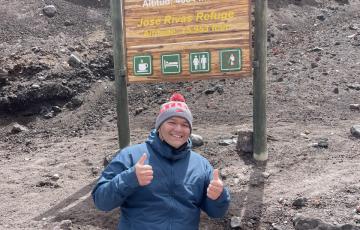
Fernando
I am a 26-year-old cancer survivor and am about to begin my first year of law school.
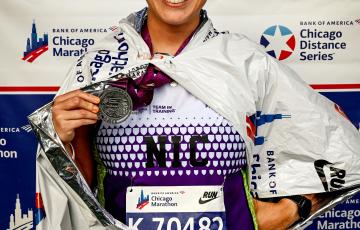
Nicolasa
The first time I heard of Team In Training (TNT) and raising money for The Leukemia & Lymphoma Society (LLS) was when my friend and I wanted to run the Nike Women's Half in D.C. We filled out the application and got accepted and started raising money, not having a clue about where this path was going to lead us. It was at that time that I began to realize the impact leukemia and lymphoma have had on my family and friends, whether they or a loved one had gone through treatment. I wrote all of their names on my singlet and carried them with me along that course.
Rachel
My name is Rachel. My tribal affiliation is full-blood Chickasaw/Creek/Seminole. I am 19 years old and will be entering my second year at the University of Oklahoma in Norman, Oklahoma. I attended Little Axe Schools from Kindergarten to my senior year of high school. Little Axe is a rural community school outside of Norman, Oklahoma. My parents are both full-blood Natives, and I have an older brother (25) and a younger brother (16). My older brother, Caleb, is a state trooper for the State of Oklahoma. My younger brother, Andrew, will be starting the 10th grade at Little Axe High School.
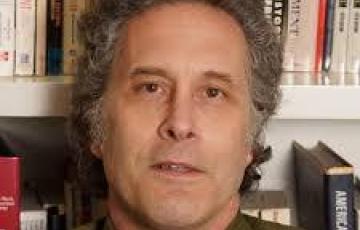
James
My symptoms began in May 2017. I was having shortness of breath while climbing stairs and jogging up even the smallest of inclines. I chalked my windedness to age; I was fifty-seven. And I told myself that I was tired after teaching a hectic school year.
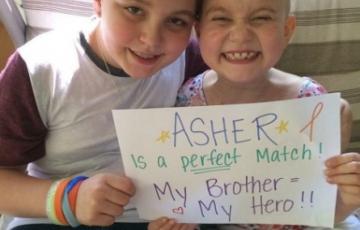
Savanna
Savanna, age ten, was diagnosed with high risk Pre B Acute Lymphoblastic Leukemia in May 2014. She was in and out of the hospital for 114 days – close to half of a year! She endured countless chemo treatments, stays in the Pediatric ICU, intensive total body irradiation, spinal taps, blood transfusions and much more. The doctors decided her best chance to beat her cancer was a full Bone Marrow Transplant. Her match was her brave 12-year-old brother, Asher.

Debbie
I was diagnosed with acute myeloid leukemia (AML) on November 6, 2017. I was transported to the James Cancer Hospital and immediately placed in a medically induced coma for several weeks. I was given intense chemotherapy with little hope that I would survive. Luckily for me, I did survive and was sent to Dodd Hall where I would learn to walk, talk, think, and swallow without asphyxiating myself. After two long months in the hospital, I went home in January of 2018 to fatten up and get strong enough for my stem cell transplant.
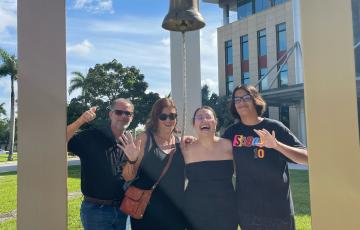
Sofia
As a five-year survivor of Hodgkin lymphoma (HL), I have come to truly appreciate the value of life's opportunities and the importance of being fully present in every moment. My battle against cancer has shaped me into a determined and compassionate individual, instilling in me a deep sense of empathy for others facing similar challenges. I am grateful to have been awarded a scholarship for cancer survivors by The Leukemia & Lymphoma Society (LLS), recognizing both my journey and my aspirations.
Dale
My husband, Dale, was first diagnosed with leukemia in October 2011, after we noticed a bubble under his chin. His chemo treatment lasted for four months, and in May of 2012, he was in remission. We were very excited to learn those results. He took his port out, and started living life again. Early in 2015, Dale was told his cancer was back, and the skin bubbles started to reappear. This meant another port and a different chemo treatment. It made him very sick, angry and depressed. It’s hard to watch your husband cry or shake cause he’s so cold and you just can’t keep him warm enough.
Len
My son was rubbing my shoulders and noticed a lump on the side of my neck which freaked him out. He then told my wife about it and they demanded that I go have it checked. In November 2013, I was diagnosed with chronic lymphocytic leukemia (CLL).
I had my second round of treatment this past spring. The first one was rituxan alone and this last time was rituxan along with bendamustine for six months.

Marc
In 1989, Marc Smith, was diagnosed with acute myelogenous leukemia (AML). He was given a terminal prognosis and for more than two years endured numerous obstacles and setbacks, including two relapses and six extensive rounds of chemotherapy. His only chance of even short-term survival was to have a bone marrow transplant.
Jessica
Two years after surviving a massive heart attack, a heart transplant and a leg amputation at age 16, Jessica found a lump on her neck and was diagnosed with non-Hodgkin lymphoma (NHL). After months of treatment, her cancer was in remission.
Six years later, Jessica found another lump which out to be a different form of NHL. She told herself she'd been through cancer once before and there was no reason she couldn't beat it again. By January 2008, she was back in remission and finished treatment that following May.

Kevin
On October 30th, 2019, I was diagnosed with T-cell acute lymphoblastic leukemia (ALL) at 39 years old and having been an athlete my entire life. I was actually swimming and training to compete when I got the news. With a wife of 13 years and three kids at home, an 11 yr old boy and twin 9-year-old girls, everything changed for our family, even just going out “Trick or Treating.”

Steve
In 2015, I started having issues with being able to fight a sinus infection. Several months later, my doctor ordered me to have a bone marrow test and I was diagnosed acute myeloid leukemia (AML).
Just days after my diagnosis, I started chemotherapy. It was the worst point in my life, I lost my hair, appetite, taste buds and my strength. The doctors encouraged me to get up and walk around the floor as much as I could to build my strength back.
Edward
In October 2015, I was diagnosed with acute lymphoblastic leukemia (ALL). I had my first round of chemo then I was hospitalized for three months. I had various complications such as acute respiratory failure and difficulty with incubation. I also experienced a cardiopulmonary arrest for which I required resuscitation and intubation and my heart temporarily stopped for 5-10 minutes. I also developed bleeding on my left brain and septic shock.
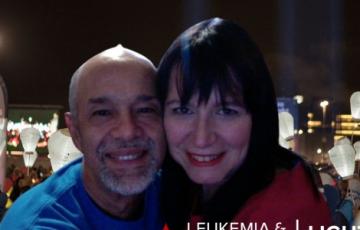
Marie
In early 2017 we found out my husband Miguel had non-Hodgkin's lymphoma diffuse large B-cell. It was the most frightening and overwhelming time of our lives. To this day I am amazed at how we got through it.

Michelle
I am 43 and will be 44 this year. I have been doing this forever, and I do it every year for everyone who's fighting, and surviving. and more. I love it, and I, too, am a six-time survivor of all cancers at different times of my life and possibly another. I am a childhood cancer survivor since I was 2½ years old. I had leukemia, and it was in the 80s so I had excruciating radiation and chemotherapy. I went through about three years of bone marrow and spinal taps and all the medications that they put me on until I was at least five years old.
Rowena
I was diagnosed in June 2022 with acute myeloid leukemia (AML) and Philadelphia chromosome +. My blood was tested in April and all was well, by the time May came around I had 50% cell blasts. I was treated in December 2022 with chemo and my bone marrow transplant. Thankfully, my younger brother was a 100% match to be able to donate his cells. I’ve had some major problems with GVHD, especially with my eyes. Sometimes I get super dehydrated and can’t eat without vomiting. Thankfully I am now on Jakavi and Prednisone to help my esophagus, stomach, and dry mouth.

Layla
"Our LLS chapter has been there for us, with support and information that has helped immensely. We've formed a friends and family Ttam for the Light The Night Walk and it feels so rewarding to raise funds to help others who, like Layla, are bravely battling blood cancers." Alecia | Layla's mom

Timothy
I am an awardee of The Leukemia & Lymphoma Society’s (LLS) Scholarship for Blood Cancer Survivors. I currently hold an associate’s degree in science and am pursuing my bachelor's degree in biology at California State University, San Bernardino, (CSUSB). I am very grateful to be granted this scholarship to help pay for my tuition. In fact, this is the first scholarship I have ever been awarded during my education. These funds are a big stress reliever as it has provided me with the ability to avoid taking out a loan for school and given me peace of mind.
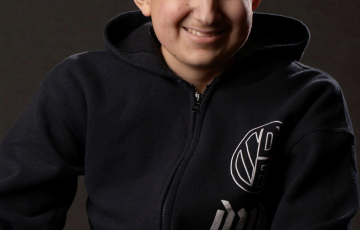
Nick
My former student, Nick K. was a previous honoree of The Leukemia & Lymphoma Society (LLS). Diagnosed with a PNET brain tumor at age 4 and enduring two bouts of acute myeloid leukemia (AML) as a result in the years to follow, Nick was obviously a fighter!
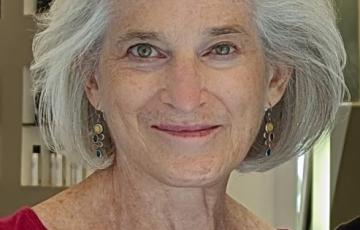
Laura
I became aware of The Leukemia and Lymphoma Society (LLS) after I was diagnosed with acute lymphocytic leukemia (ALL). A social worker at the hospital where I was being treated gave my information to the LLS Patient Services Manager, and she called me. Then she gave me the contact information for a patient who had young children like mine and was two weeks ahead of me in the process, and we spoke with each other.
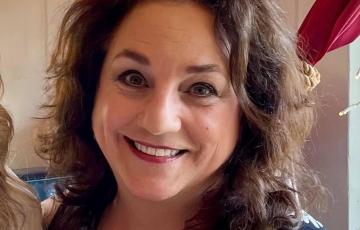
Tina
Today I am CELEBRATING!! AHHHHH, SO BLESSED!!! It’s been 20 years since my leukemia diagnosis! I am celebrating because of so many reasons!